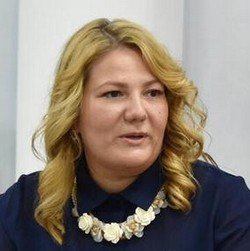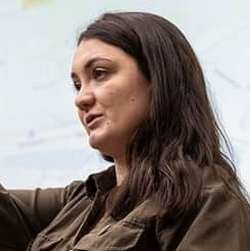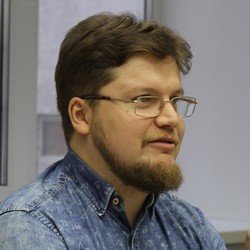‘I would like to see a book on the history of Russians in Tatarstan’
Whit Monday in Cloth Mill Settlement festival hosted Russian Urban Culture in History and Nowadays debate. Its participants explained how traditional Russian holidays changed in Kazan what, in fact, it is to be Russian in the capital of multiethnic Tatarstan. Enzhe Dusayeva, a culture expert, historian, co-founder of Tamga institute of urban research, became a moderator of the meeting.
Where to go on Trinity Sunday: to Switzerland or Arsk Field?
Yelena Gushchina, director of Kazan Federal University’s ethnographic museum, became the first speaker who talked about how it used to be celebrated in Kazan.

Kazan was divided into quarters and settlements, both locals and migrants from the countryside in the latter. Every settlement had its specifics. For instance, mills, the existence of factory workers determined the life of the Cloth Mill Settlement. We will note that though 74% of the population of Kazan was Russian, the city had several religions.
“Migrants reproduced the behaviour, stereotypes of the countryside. This influenced the appearance of the city,” Gushchina went on. “A house with a garden was the norm for Kazan.”
Citizens treated rural traditions in a specific way, though without disdain. Quarters considered settlements as something lower, not urban, violating the urban space.
What about holidays? As Gushchina noted, they quickly lose their specifics, especially rites, they turn into parties. Any tradition is added a novelty, which itself becomes a tradition. The form and functions of a holiday break down in the city. A clean-up on Maundy Thursday is one of the examples. The function remained, but the meaning disappeared.
Gushchina described Trinity Sunday in detail:
“Its celebration in the countryside is a mixture of Orthodox Christianity and the folk calendar. Firstly, it was girls’ holiday. On the cusp of the centuries, it turned into a youth holiday, boys joined it. But the age of celebrating people didn’t change. Also, a lot of rites were already only formal, they didn’t have any sacred meaning. People simply have fun, sing songs, put strips of cloth onto a birch but didn’t believe. The green that remained in the city was one of the components of the celebration. Entries, houses were adorned with plants, people took them to a church service. It is bright, it is beautiful. The city was fragrant but authorities fought against it. They said the truly Orthodox essence was violated, which was paganism.”
What did people do after the service? Well-to-do people went to Russian or German Switzerland, Lake Kaban, those who are poorer went to the Arsk Field (nowadays Yershova Street). They held fairs, walked near the lake, organised performances. A lot of people gathered in the Arsk Field, people from the countryside came there. They drank not only tea: many ended up at police stations after every Trinity Sunday. It is said there wasn’t music, people headed to Verkhny Uslon where Trinity Sunday was a patron saint’s day, with rites. Though it is hard to say, Gushchina says, if this wasn’t already a show.
“Orthodox requirements the church defended are more available now for people,” added historian Mark Shishkin. “Now prayers are closer to us, not a circle dance.”
“Do such holidays have the future in the city? Is there demand for such holidays?” Dusayeva wondered.
“The Sedmiozyor Virgin Mary Icon’s honouring is one of the holidays that fell out,” Shishkin answered. “The focus is on the Kazan icon. The question is how big this demand will be. I wrote a lot last year about how our people combated the plague (Editor’s note: the history of this icon is related to it). And it is seen there that it was the community’s common business. Now it is hard to imagine people’s big involvement in religious ceremonies. Except for Iran or in the south USA. The number of practising Orthodox believers is small. If the second procession is held, people won’t understand in general. They will say, ‘Why do we need a second one?’”

“An urban festival is for everybody,” Gushchina concluded. “One can see something close, something strange in every festival. Russia Day took place recently. And people considered it as a holiday. Only organisers saw this as work, an event. I surveyed people, they replied it was great, people were different but lived together.”
“They are the only holders of the ‘controlling interest’ in this country. But not in the republic”
Dusayeva defined the second part of the meeting as When Does Kazan Citizen Understand He is Russian? Mark Shishkin who was christened as an ethnic provocateur at the meeting specified that he would be talking about what “was built in front of our eyes”. He chose French philosopher Ernest Renan’s expression: “The life of the nation is a daily plebiscite just as an individual's existence is a perpetual affirmation of life.”
“Nation is formed by a daily behavioural choice of those who belong to it,” Shishkin said. “It is felt in minority nations. A Udmurt person decides if he should speak Russian or Udmurt. Russians feel these borders worse. They are the only holders of the ‘controlling interest’ in this country. But not in the republic: in Kazan, he has to show his ethnicity if he wishes.”
How is being Russian manifested here and now? Shishkin chose several factors:
“Religion became the strongest. How to bury a person, how to start a new life, how to get married — this is the basics. Tatars didn’t assimilate precisely because they have their own religion, their own inner stamina. Russians survive for the same reason.
“If a person enters the community’s life, he is affected by the narrative,” Shishkin continued. “He should know his ancestors, share the concerns of Radonezhsky, Hermogenes and so on. Though it might seem that this is far from him, why care? But all this is a national and historical narrative.”
A Russian person has his own Kazan geography, topography: Sviyazhsk, Raifa, Seimozyorsk. The fact that Varsonofy Optinsky lived in Kazan matters to him, not Ulyanov who studied in the city, Shishkin indicated.
Being religious affirms Russian nature. On the other hand, being religious belongs to the minority, Shishkin noted and indicated that other forms of Orthodox Christianity — Old Believers, Slavic Neopaganism, paganism — are also a manifestation of being Russian. At the same time, baptised Tatars don’t consider they are Russian.
Research is the second factor:

“Those who know the Arab script read other literature,” Dusayeva noted.
“Social activity is the third manifestation,” Shishkin went on. “The same fight for destroyed cathedrals. Urban protection projects stressed this too.”
It is good that Kazan has clearly considered identities that flexibly match, don’t dissolve one in another, Shishkin concluded and told the audience about his dream — a book on the history of Russians in Tatarstan — with information about traditional culture, the formation of the population and other interesting facts.